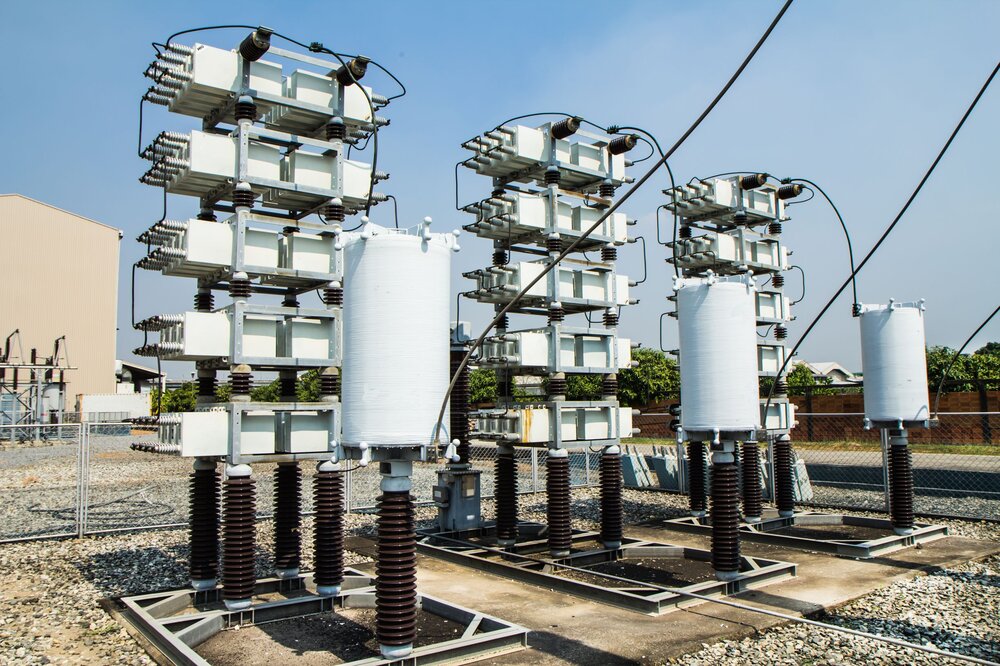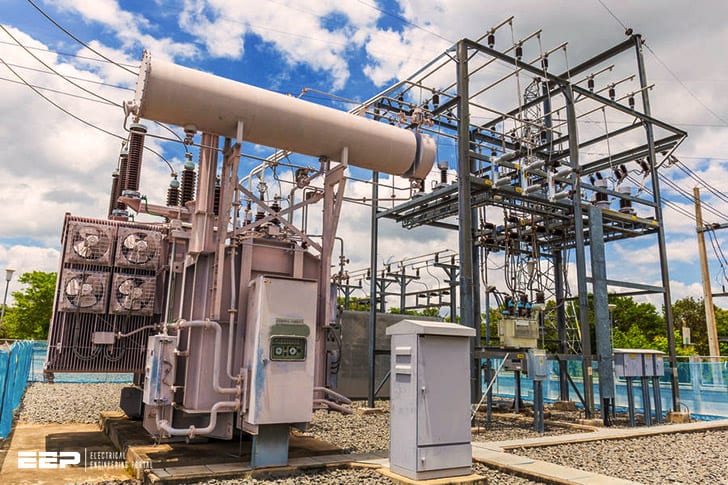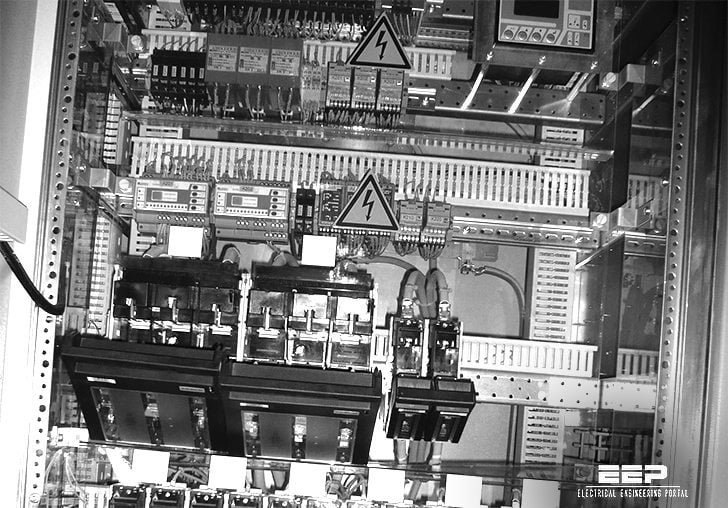A power factor correction substation is a facility where the electrical power from the utility company is converted to improve the power factor before it is sent to customers. By improving the power factor, the voltage and current levels on the distribution system are more efficient, which can save money for utilities and their customers.
A power factor correction substation is a type of electrical substation that is used to improve the power factor of an electrical grid. The power factor is a measure of the efficiency of an electrical system and is defined as the ratio of the real power to the apparent power. A low power factor indicates that the system is not operating at its full potential, while a high power factor indicates that it is operating efficiently.
A power factor correction substation can be used to improve the efficiency of an electrical grid by increasing the amount of real power and decreasing the amount of apparent power. This can be done by installing capacitors or inductors into the system, which will store or release energy as needed to correct the power factor. Power factor correction substations are typically installed at locations where there is a high demand for electricity, such as industrial plants or large office buildings.
LIVE OPERATION of power factor & voltage improvement
Power Factor Correction Formula
What is power factor correction? Power factor correction (PFC) is a technique used to improve the power factor of an alternating current (AC) electrical power system. A low power factor can cause problems such as decreased efficiency, overheating of equipment, and voltage drop in the distribution system.
How does PFC work? PFC works by adding impedance to the circuit to counteract the effects of inductive loads. Inductive loads are those that contain inductors, such as motors and transformers.
When an inductor is present in a circuit, it creates a magnetic field that opposes the flow of current. This opposition decreases the amount of usable power in the circuit. By adding impedance to the circuit, PFC increases the overall resistance to current flow, which improves power utilization and reduces losses due to heating.
What are the benefits of PFC? The main benefit of PFC is improved efficiency. When a system has a low power factor, a lot of energy is wasted due to heat loss in resistive components like wires and transformers.
By increasing the power factor, less energy is lost and more useful work can be done with the same amount of input power. Additionally, PFC can help prevent voltage drops in circuits caused by inductive loads.
Power Factor Correction Calculator
If you are looking for a power factor correction calculator, there are many online options available. This type of calculator can be used to calculate the reactive power, apparent power, and true power in an AC circuit. It is important to note that the calculators will give different results depending on whether the circuit is single-phase or three-phase.
When using a power factor correction calculator, you will need to enter the values for voltage (V), current (I), and frequency (Hz). The calculator will then provide the results for reactive power (Q), apparent power (S), and true power (P).
It is important to understand what each of these values represents.
Reactive power is the portion of total power that does not contribute to work output. Apparent power is the vector sum of active and reactive powers. True power is the realpower delivered by an AC source and is equal to the product of root mean square voltage and root mean square current.
understanding these concepts can help you determine which size capacitor you need to improve your system’s overall efficiency.
Power Factor Correction Device for Home
What is a power factor correction device? A power factor correction device is a devices that improves the power factor of an AC electrical power system. Power factor is the ratio of the real power flowing to the equipment and the apparent power being drawn from the electricity supply.
A low power factor can cause voltage drop and line losses in the distribution system. It also results in higher currents, which can lead to overheating and damage to equipment. A high power factor means that less current is required to do the same amount of work, which reduces energy costs.
There are two types of power factor correction devices: active and passive. Active devices use electronic components to inject a leading or lagging current into the circuit, while passive devices rely on inductors or capacitors to store energy and release it into the circuit at the correct time.
Power factor correction devices are used in a variety of applications, including residential, commercial, industrial, and utility-scale systems.
Power Factor Correction Problems And Solutions Pdf
What is Power Factor Correction?
Power factor correction (PFC) is a method used to improve the power factor of an AC electrical power system. A low power factor can cause problems such as increased energy costs, reduced capacity of the electrical system, and decreased efficiency.
PFC can be achieved by using devices called capacitors or inductors to counteract the effects of inductive loads.
Why is Power Factor Correction Important?
A low power factor can cause many problems for an electric utility company or an industrial facility.
Some of these problems include:
• Increased energy costs – When the utility company charges for electricity based on kilowatt-hours (kWh), a low power factor will result in higher energy bills because more kWh are required to deliver the same amount of real power.
• Decreased capacity – The electric utility company has a limit on the amount of real power that it can supply to customers.
If the customers have a low power factor, they are effectively increasing their demand on the system and decreasing the available capacity for other customers.
• Decreased efficiency – The distribution transformers, generators, and motors in an electrical system all have peak efficiencies at or near a unity power factor. As thepower factor decreases, so does the efficiency of these devices.
This results in increased energy losses and decreased overall system performance.
Power Factor Correction Unit
What is a power factor correction unit? A power factor correction (PFC) unit is an electronic device that improves the power factor of an AC electrical power system. Power factor is a measure of how effectively electrical equipment uses the voltage and current supplied by the utility company.
A low power factor indicates that the equipment is not using the voltage and current efficiently, which can lead to increased energy costs, lower capacity utilization, and higher levels of harmonic distortion in the electrical system. PFC units improve power factor by storing energy during periods of low demand and releasing it during periods of high demand, thereby reducing the overall amount of peak demand on the system.
There are two types of PFC units: active PFC units and passive PFC units.
Active PFC units use semiconductor devices to store energy, while passive PFC units use inductors or capacitors to store energy. Passive PFC units are typically less expensive than active PFC units, but they are less efficient and have a shorter life span.
PFC units can be used in a variety of applications, including office buildings, factories, hospitals, retail stores, and hotels.
In many cases, retrofitting existing equipment with PFC units can be more cost-effective than replacing it with new equipment that has a built-in PFC unit.
Power Factor Correction Device
A power factor correction device is a device that is used to improve the power factor of an electrical system. The power factor is the ratio of the real power to the apparent power, and is a measure of how efficiently the system uses electricity. A low power factor indicates that the system is not using electricity as efficiently as it could be, and a high power factor indicates that the system is using electricity more efficiently.
Power factor correction devices are used to improve the efficiency of electrical systems by making them use less electricity.
Power Factor Correction Example
What is power factor correction?
In electrical engineering, power factor correction (PFC) is a technique used to improve the power factor of an AC electrical power system. By definition, the power factor is the ratio of real to apparent power and is a number between 0 and 1.
A low power factor indicates that the load is drawing more current than it needs to produce the active power it requires. This results in wasted energy that increases electricity costs and can cause problems with the operation of equipment due to voltage drop.
There are two main types of PFC: passive and active.
Passive PFC uses inductors and capacitors connected in series or parallel across the load to shiftthe phase angle between voltage and current, resulting in a higher Power Factor. Active PFC uses electronic devices such as MOSFETs or Insulated Gate Bipolar Transistors (IGBTs) to control current flow, resulting in a near-unity Power Factor.
Why is power factor correction important?
A low power factor not only wastes energy but also causes problems with equipment operation due to voltage drop. In addition, utilities may charge penalties for having a low power factor since it affects their ability to supply quality service to other customers on the same circuit. By correcting the Power Factor, energy losses are reduced, equipment operates more efficiently, and utility penalties can be avoided.
Power Factor Correction Pdf
What is power factor correction?
Power factor correction (PFC) is a technique used to improve the power factor of an alternating current (AC) electrical power system. By definition, the power factor is the ratio of real to apparent power flowing in a circuit.
A low power factor indicates that the load on the circuit is mostly inductive, drawing current primarily during the positive and negative peaks of the sinusoidal voltage waveform. This can cause problems with voltage regulation and can lead to increased energy losses in transmission and distribution systems. PFC techniques are used to increase the effective utilization of AC circuits by improving their power factors.
How does PFC work?
The basic principle behind PFC is simple: since inductive loads draw current only during certain portions of the AC cycle, if we can shift this current so that it flows during other parts of the cycle, we can effectively reduce or eliminate its impact on overall power consumption. This shift in current flow is accomplished by adding reactive components (usually capacitors or inductors) to the circuit which serve to “store” or “release” energy as needed.
By properly sizing these reactive components, they can be used to correct for both leading and lagging power factors.
Why is PFC important?
As mentioned above, poor power factor can lead to increased energy losses in transmission and distribution systems.
It also puts stress on generators and motors which can shorten their lifespan and lead to increased maintenance costs. In addition, many utility companies now charge higher rates for customers with poor power factors, so correcting for PF can result in significant cost savings.

Credit: electrical-engineering-portal.com
What is Power Factor Correction System?
A power factor correction system is a device that is used to improve the power factor of an electrical circuit. The power factor is the ratio of the active power to the apparent power and is a measure of how efficiently the circuit uses electricity. A low power factor indicates that the circuit is using more electricity than it needs to and a high power factor indicates that it is using less.
The main reason for wanting to improve the power factor is to reduce energy losses in the system. When the power factor is low, more current is required to do the same amount of work and this results in higher losses due to resistive heating. This can be especially important in large systems where even a small improvement in efficiency can result in significant savings.
There are two main types of power factor correction devices, passive and active. Passive devices tend to be cheaper but are less effective than active devices. Active devices use electronic components to actively cancel out reactive current and so are more expensive but much more effective.
Power factor correction systems are typically installed at businesses or other locations where there are large numbers of electrical loads connected together. They can be retrofitted into existing systems or installed as part of new construction projects.
What are the Main Benefits of Power Factor Correction?
An electric power system is composed of generators, transmission lines, distribution lines, transformers, loads, and storage devices. The power factor is a measure of how efficiently the system uses the electricity it generates. A low power factor indicates that the system is not using its generated electricity efficiently.
Power factor correction (PFC) is a technique used to improve the power factor of an alternating current (AC) electrical power system.
The main benefits of PFC are:
1) Increased Efficiency: A higher power factor means that less current is required to deliver the same amount of active (or real) power.
This reduces I2R losses in cables and other electrical equipment which results in increased efficiency and lower energy costs.
2) Improved Power Quality: A low power factor can cause voltage fluctuations and harmonic distortion which can damage equipment or cause problems with sensitive electronic devices. By improving the power factor these problems can be reduced or eliminated altogether.
3) Reduced Capacitor Requirements: When reactivepower does not flow back to the generator but instead circulates within the local network, capacitors may be used to supply this reactivepower locally instead of at the generator end.
Does Power Factor Correction Reduce Kva?
Yes, power factor correction can reduce the apparent power (kVA) required to supply a given amount of active power (kW). However, it does not change the actual power (kW) being consumed by the load.
Conclusion
Power factor correction substation are used to improve power quality and reliability in electric power systems. They are typically installed at the point of connection between the utility grid and the customer’s facility. Power factor correction substations can be used to improve power factor, reduce line losses, and improve voltage regulation.



